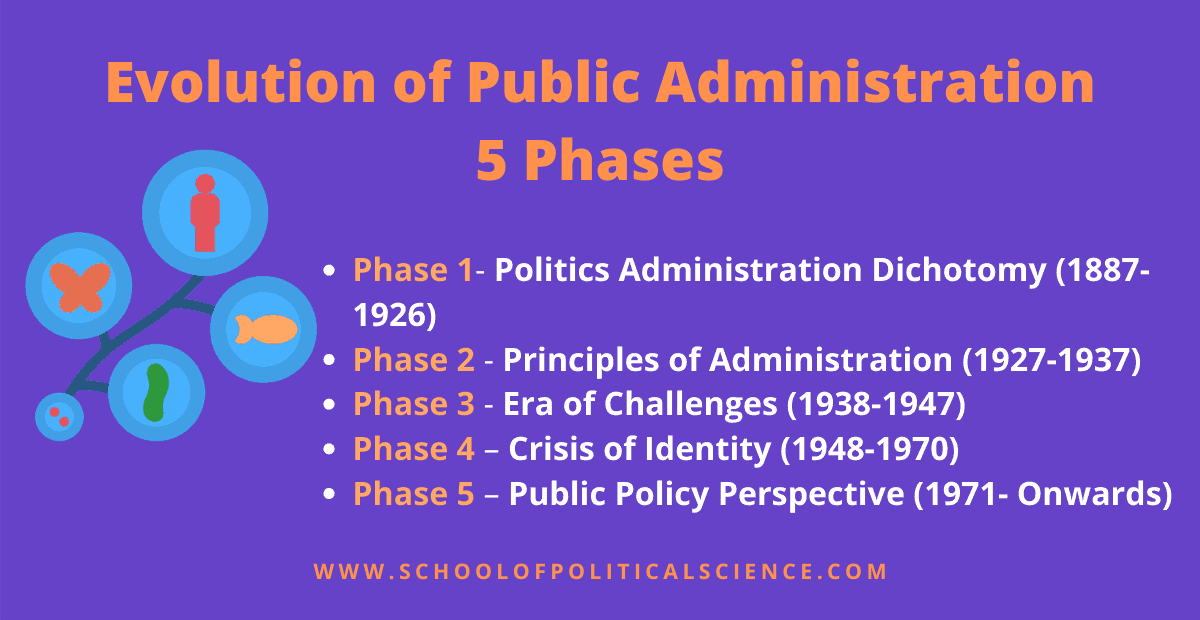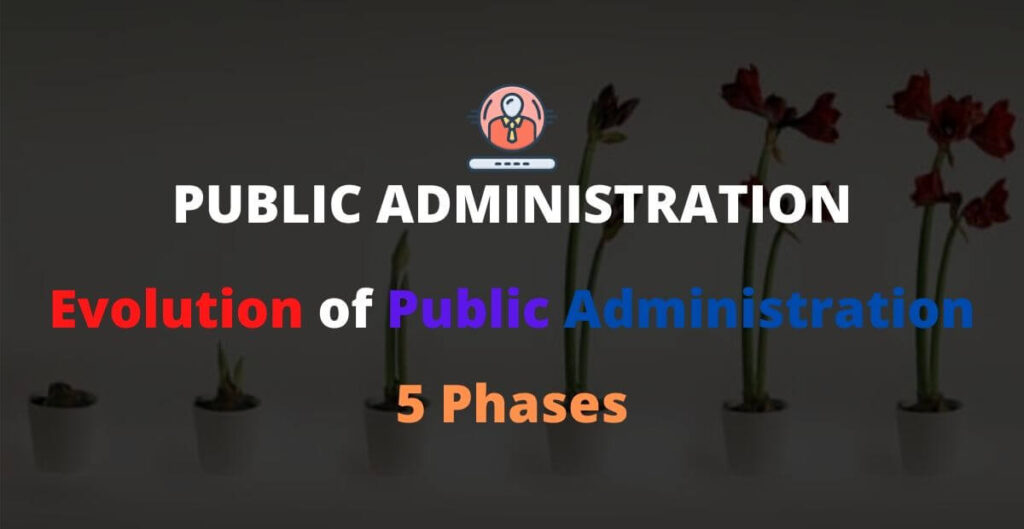Think about how governments operated in the past—slow, heavily bureaucratic, and dependent on paperwork. Now, contrast that with modern governance, which leverages technology, artificial intelligence, and digital services to enhance accessibility and efficiency. This transformation reflects the evolution of public administration, a continuous process that has redefined the role of government in society.
The evolution of public administration began with the start of civilization when people started living together and making collective efforts. While it became a separate academic discipline in the late 19th century, its roots go back to ancient times. Every society has always had some form of administration as part of its social, political, and economic systems.
It is clear from the archeological finds of the Indus Valley Civilization of ancient India in 2500BC that urban planning and administration were of a very advanced standard at that time.
Ancient Egyptian civilization also shows that the flooding of the Nile was used for irrigation with the help of high pyramids.
According to Confucian ideals, the Hun dynasty in ancient China believed that good people should be hired to do government work.
Renowned European empires such as Greece, Rome, Holy Roman, and Spain were administrative empires. These huge empires were governed by laws and governed from a single center, meaning that the administrative side of the government prevailed.
Must Read– Top 10 Public Administration Jobs You Should Consider for a Rewarding Career
5 Phases of the Evolution of Public Administration as a Discipline

Woodrow Wilson’s article “The Study of Administration”, published in 1887, is considered the origin of public administration as a discipline. This article is very important in the history of the emergence and evolution of public administration.
Because Wilson was the first who promote the concept of the ‘Science of Administration’. The word administration is important for the need to increase the organizational and systemic excellence of government functions.
Must Read– Meaning Nature And Scope of Public Administration
It is Wilson’s view of the administration that defines the individual sphere of public administration, and perhaps we can discover the idea of how public administration began to emerge as a separate discipline in the latter half of the nineteenth century.
The evolution of public administration from the end of the nineteenth century to the present has taken place in the following 5 phases.
- Phase 1- Politics Administration Dichotomy (1887-1926)
- Phase 2 – Principles of Administration (1927-1937)
- Phase 3 – Era of Challenges (1938-1947)
- Phase 4 – Crisis of Identity (1948-1970)
- Phase 5 – Public Policy Perspective (1971- Onwards)
Phase 1 of the Evolution of Public Administration
Politics Administration Dichotomy (1887-1926)
Woodrow Wilson’s “The Study of Administration” was the first to present the demand for separation (Politics Administration Dichotomy) between politics and administration.
His claim to distinguish between politics and administration was reinforced in the early twentieth century with the publication of Frank Goodnow’s book, “Politics and Administration: A Study in Government” (1900). He is known as the intellectual father of American Public Administration.
The fact that the administration is separate from politics and the administration needs to be given a separate status for the sake of politics is being propagated to the masses at this time.
It is said that while it is the responsibility of politicians to make political decisions, politicians do not have the experience or excellence needed to implement these decisions. Therefore, to implement these policies (decisions) successfully, qualified and trained employees are required. Only the administration can rely on the efficient and sustainable implementation of government policy.
The scholars of this phase have practiced more on the (Locus) basis of public administration. The bureaucratic institution of the government is the mainstay of public administration.
The legislature decides in the discussion what the will is; the judiciary resolves problems in the implementation of that state will or policy; On the other hand, the administration applies that reality with the help of statesmen.
Thus the division between public administration and politics is drawn and this phase is marked as a politics-administration dichotomy.
At the beginning of the twentieth century, public administration was recognized as a separate discipline in American universities. At this time the public administration staff had a very close relationship with public administration theorists and researchers.
The New York Bureau of Municipal Research was established in 1906 to make local government work a success, and in 1911 the organization established the first school of public administration known as the Training School for Public Service.
The year 1926 is very important in the theoretical discussion of public administration because this year L D White published his book “Introduction to the Study of Public Administration”.
This book is considered as the first textbook on public administration and this book highlights the politics-administration dichotomy more clearly.
Phase 2 of the Evolution of Public Administration
Principles of Administration (1927-1937)
1927 is considered to be the beginning of the second phase of the evolution of public administration as the book “Principles of Public Administration” by W F Willoughby was published in the same year.
The book is considered the second most important publication in public administration after White’s book.
In this phase of the evolution of public administration, discussions on public administration have been tried as scientific discussions since this time. It is thought that there are a number of scientific principles in the discussion of public administration that need to be disclosed.
If these principles are consciously applied by the administrators in appropriate places, it is possible to increase work efficiency and also develop public administration as a scientific discipline.
Frederick Winslow Taylor’s book Principles of Scientific Management (1911) speaks to the application of four numbers of principles to enhance the efficiency of the organization.
- The development of a true science of work.
- The Scientific selection, training, and progressive development of the workman.
- The close coordination between the science of work and the scientifically selected and trained men.
- Equal division of work and responsibility
In addition to Taylor, Gantt (Gantt chart), Gilbert (Flow Process chart) and H. Emerson (The Twelve Principles Efficiency) similarly spoke of applying scientific principles to repeat skills in the industry. Overall, these ideas are called scientific management schools.
This phase is basically called the golden age in the history of public administration. Because the aspect of the intellectual practice of public administration peaked at this time.
The writings of several famous administrative theorists help to give a different dimension to public administration.
| Author Names | Book Names | Year |
| Henry Fayol | General and Industrial Management | 1916 |
| Mary Parker Follet | Creative Experience | 1928 |
| James D. Mooney and Alan Reiley | Onward Industry, Principles of Organization | 1931, 1940 |
| Gullick and Urwick | Papers on the Science of Administration | 1937 |
Henry Fayol
He gives 14 principles for better outcomes from the administration. These are –
- Division of Work
- Authority and responsibility
- Discipline
- Unity of command
- Unity of direction
- Subordination of individual interest to general interest
- Remuneration
- Centralization and Decentralization
- Scalar chain
- Order
- Equity
- Stability of tenure of personnel
- Initiative
- Esprit De Corps
Gullick and Urwick
Among the most common principles of administration, Gullick and Urwick’s POSDCORB is particularly noteworthy. This is an acronym for 7 functions of the administration. These are-
- P- Planning
- O- Organizing
- S- Staffing
- D- Directing
- CO- Coordinating
- R- Reporting
- B- Budgeting
James D. Mooney and Alan Reiley
They also provide four principles for increasing administrative efficiency.
- Coordination
- Scalar Process
- Functional Differentiation
- Line and Staff
You can see that this phase of public administration focuses only on the increase of efficiency in administrative work.
Mohit Bhattacharya rightly observes that “The ‘public’ aspect of public administration was virtually dropped at this stage and the focus was almost wholly on efficiency. This stage can be called the stage of orthodoxy, as efforts were underway to delineate firmly the boundaries of a new discipline of management. Public administration merged into the science.”
Phase 3 of the Evolution of Public Administration
The Era of Challenges (1938-1947)
The way in which public administration has developed over the years with its emphasis on principles has faced some intellectual challenges with the publication of Chester I Barnard’s book “The Functions of the Executive” in 1936.
In this phase of the evolution of public administration, basically, the theoretical concept of public administration is challenged from two perspectives.
First, a new generation of theorists thought that the dividing line between politics and public administration was never possible.
Second, the administrative theories that have been published since 1940 criticize administrative principles. The question arises as to whether there is a universal and ultimate principle in the administration.
In the book “Elements of Public Administration”, edited by F M Marx, all the writers, through their articles, point out the futility of the dividing line between politics and public administration that has been prevalent for so long.
How public administration was portrayed as a value-neutral issue is denied by each of these writers.
A new group has set out to promote the idea that scientific management is not the last word in administration, but that social and environmental factors are an effective force. This group is known as the Human Relations School.
Modern scholars believe that the research that some researchers at Harvard University started on the Hawthorne Plant, initiated by the Western Electric Company in Chicago, started an ideological revolution in administration and organizational theory.
Researchers such as Elton Mayo, and F. J. Rothlisberger concluded from their research that innovation of principles and their application alone do not lead to the improvement of production or production methods.
The human component of management is also important. By human elements, they mean the work environment, the intentions of the director and staff, satisfaction, and so on.
Herbert Simon welcomes the application of scientific ideas in the field of administration and management, but in this case, he considers the principles given by the proponents of scientific management or traditional writers as No more than proverbs.
He presented the Rational Decision Making Model by exposing the ambiguity and inconsistency of the theory of scientific management.
Robert Dahl also (like Simon) believes that it is not a matter of inventing or applying advanced methods or techniques of administration, but of judging the social, historical, sociological, economic, and other environmental forces in the social sphere in which the administration is formed.
This is because the impact of this environmental force on the development of the administration is particularly significant.
Dahl also has argued that there are three problems in the scientific theory of public administration (classical theory of administration).
The exclusion of the normative elements from the administrative theory.
There have no human aspects in scientific administrative theories.
Those Theories are only based on a few examples drawn from limited national and historical settings. This proves that classical theories are unscientific.
Phase 4 of the Evolution of Public Administration
Crisis of Identity (1948-1970)
The politics and public administration dichotomy and the application of universal principles in the field of public administration have been abandoned by theorists of public administration since the 1950s.
Administrative theorists of this time recognized the relationship of public administration with politics. As a result, public administration became dependent on political science. In this situation, there is confusion about what is the discussion area of public administration.
This is why this phase of public administration is called the crisis of identity in public administration.
To overcome this identity crisis, public administration came to be seen as an interdisciplinary subject.
In this phase, several sub-topics emerge in the subject matter of public administration such as
| Emerging Concepts | Contributors |
| New Human Relations theory | Chris Argyris, Douglas McGregor, Rensis Likert, Warren Bennis. |
| Comparative Public Administration | F.W Riggs and others |
| Development Administration | Edward Weidner, F.W Riggs |
| Administrative Development | F.W Riggs |
Phase 5 of the Evolution of Public Administration
Public Policy Perspective (1971- Onwards)
Another recent development of the administration is the discussion of the public policy perspective.
It gained popularity through pluralistic interpretations, communication theories, and The Science of Muddling.
The aim of this theory is to establish which social, political and economic, or personal forces are effective in policymaking.
Robert A. Dahl, James Wilson, Charles E. Lindblom, Yehezkel Dror, and Vincent Ostrom, all point out the mutual importance of different forces (social, political and economic, environmental) in policymaking.
During this time, the context of politics has gained special importance in the discussion of public administration. Accusing the conflict between politics and administration as narrow and self-serving, the new writers have identified administration as a problem of political theory. This was mainly in the United States and Europe.
Dwight Waldo, Wallace Sayre, Peter Self, and others have emphasized the concept of administrative public policy. They want to spread the concept that politics is the environment of administration.
They are interested in judging the administration in terms of relevance, values, democracy, and change as much as in politics. This new trend of public administration is known as New Public Administration.
Must-Read– New Public Administration: 4 Major Landmarks, And Principles
It was said that the administration would play a more client-oriented and effective role from the point of view of politics.
It should also be noted that since World War II, the discussion of public administration has been incomprehensible not only in developed countries but also in third-world countries. So the word development administration is significant in administration today.
The third world countries are focused on comparative public administration. The main goal of comparative public administration is to study third-world countries’ public administration and theory-building through comparative analysis.
How much active role the state can play in planning, policy formulation, and policy implementation, how much priority can be given to the policy of public welfare, and how public cooperation in administration is considered as the primary goal in development administration.
F. W. Riggs, Donald C. Stone, John D. Montgomery, Edward Weidner, Fredrick C. Mosher, and others who have conducted significant research on development administration.
Thus it can be said that the concept of the development of the science of administration, which began in the last half of the nineteenth century, has become more mature in the latter half of the twentieth century.
New interpretations and analyses have been developed in the field of administration and management by utilizing the advancement of science and technology.
Recent Trends in Public Administration
In the age of globalization, the rise of information technology is having an impact on people’s lives, as well as every part of the system of government.
Because of this advancement, several concepts also have developed in public administration in recent times.
The 1980s and 1990s saw significant changes in the administrative systems of developed nations. From hierarchical, disciplined bureaucratic administration to flexible, transparent, citizen-centric administration is an important aspect of this change.
Naturally, with this in mind, the mentality of studying public administration in a new way can be noticed from the 1990s. The wave of change that was seen in the administrative activities was also felt in the intellectual practice of the administration.
The trends of that new practice in public administration are-
- Managerialism
- New Public Management
- Market-based Public Administration
- Entrepreneurial Government
- Governance, Good Governance, and E-Governance
- Public-Private Partnership (PPP)
Conclusion
From the above discussion on 5 Phases of The Evolution of Public Administration, it can be concluded that when the journey of public administration as an academic discipline began in the late nineteenth century, there was a tendency to separate public administration from politics and make public administration a science as like natural science.
However the great challenge to this division of public administration and politics came in the 1930s. As a result, there is an identity crisis in public administration.
However, in the aftermath of the Second World War, huge changes took place in public administration. This time there is a deep connection between politics and administration. As a result, the concepts like new public administration, development administration, and comparative public administration are developed.
This change lasted until the 1980s. In the post-1980s, ideas such as New Public Management, and governance, took place in public administration to make public administration more transparent.
With the advancement of information technology, digital governance or E-Governance as well as environmental issues (disaster management) has taken place in public administration.
So it is seen that as the age of public administration has increased, its subject matter has become wider and the subject has become more prosperous.
Therefore, research on public administration will continue in the days to come and their development as students of public administration will be one of our main tasks.
Let me share your experience with what you have learned from “5 Phases of The Evolution of Public Administration“.
Share this with needful students as much as you can.
References
- CHAKRABARTY, BIDYUT KANDPAL PRAKASH CHAND. PUBLIC ADMINISTRATION IN A GLOBALIZING WORLD: Theories and Practices. SAGE INDIA, 2012.
- Laxmikanth, M. Public Administration for the UPSC Civil Services Preliminary Examination. Tata McGraw-Hill Publishing Co. Ltd., 2007.
- Chakrabarty, Bidyut, and Bhattacharya, Mohit. Public Administration: a Reader. Oxford University Press, 2007.


Comments are closed.